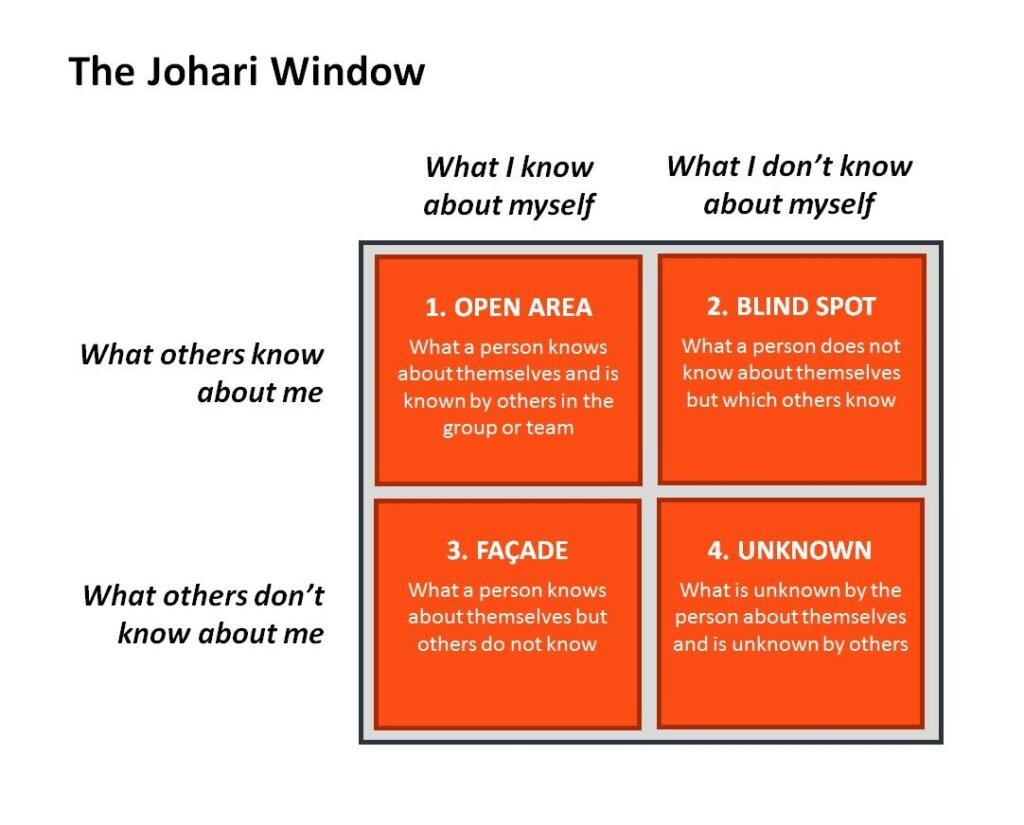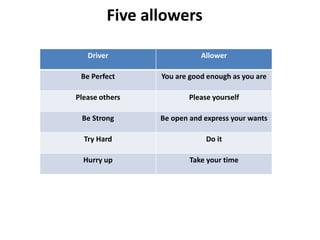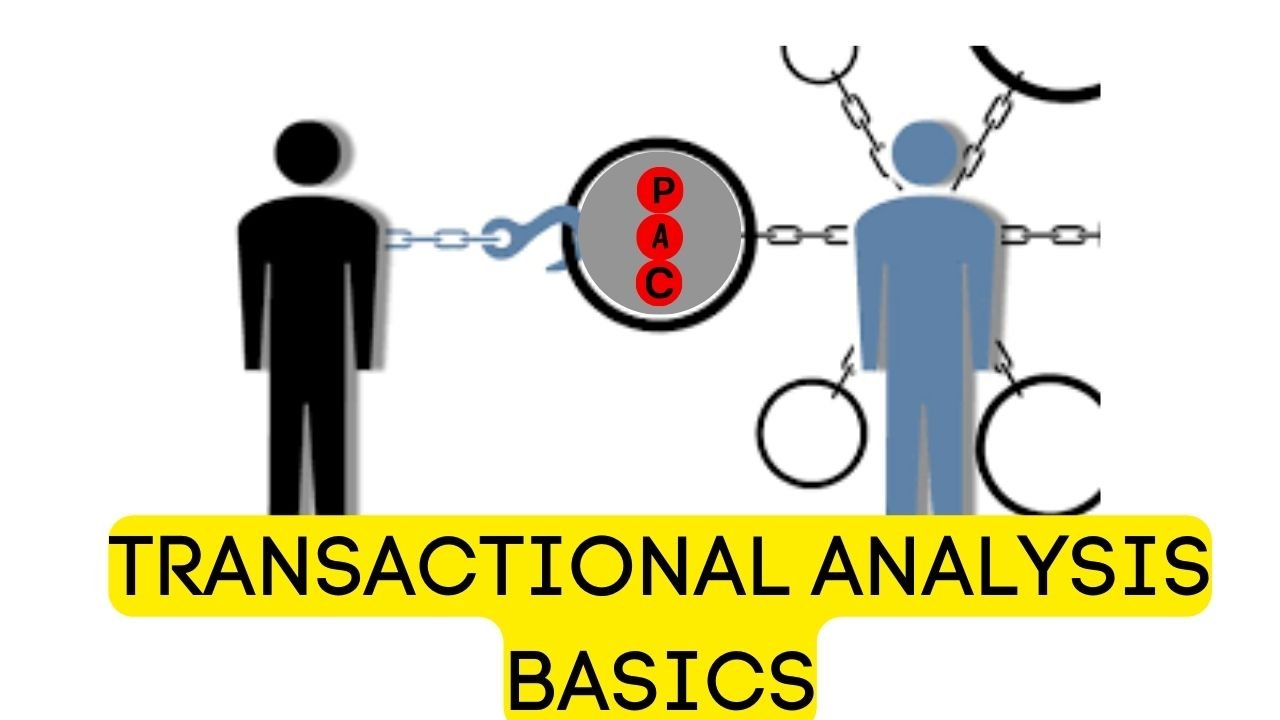
Understanding Transactional Analysis: Analyzing Human Behavior and Relationships
Understanding Transactional Analysis
Transactional Analysis (TA) is a psychological theory and method developed by Eric Berne in the 1950s. It focuses on analyzing and understanding human behavior, communication, and relationships. TA provides a framework for examining how individuals interact with one another and how their past experiences shape their present actions and decisions.Strokes in Transactional Analysis
In the context of Transactional Analysis, “strokes” refer to the basic units of recognition, attention, and communication that individuals give and receive from each other. Strokes can be verbal or non-verbal, and they play a crucial role in shaping our self-esteem and sense of worth.The Four Types of Strokes
In Transactional Analysis, strokes can be classified into four main types:- Unconditional Positive Strokes: These are genuine, sincere, and affirming messages of recognition and appreciation that are given to individuals without any conditions or expectations. They convey a sense of value and worthiness. Examples of unconditional positive strokes include:
- A genuine compliment on someone’s work or achievements
- A warm hug or a pat on the back to show support
- An encouraging smile or nod of approval
- An expression of gratitude for someone’s help or contribution
- A sincere “thank you” for someone’s presence or friendship
- Conditional Positive Strokes: These strokes are given to individuals based on certain conditions or expectations. They are often used as rewards for meeting specific criteria or standards. Examples of conditional positive strokes include:
- Praising someone only when they achieve a certain goal
- Providing recognition or rewards based on performance evaluations
- Offering compliments or approval when someone conforms to expectations
- Giving attention or acknowledgment in exchange for favors or compliance
- Showing affection or appreciation only when certain conditions are met
- Unconditional Negative Strokes: These strokes involve negative or critical messages that individuals receive without any apparent reason or justification. They can be damaging to self-esteem and can create a sense of unworthiness. Examples of unconditional negative strokes include:
- Harsh criticism or belittling comments
- Ignoring or dismissing someone’s ideas or opinions
- Mocking or ridiculing someone’s appearance or abilities
- Constantly finding faults or pointing out mistakes
- Using sarcasm or derogatory language towards someone
- Conditional Negative Strokes: These strokes are given to individuals as a form of punishment or disapproval when they fail to meet certain expectations or criteria. Examples of conditional negative strokes include:
- Expressing disappointment or disapproval when someone makes a mistake
- Withdrawing attention or affection as a consequence of non-compliance
- Using guilt or shame to manipulate someone’s behavior
- Rejecting or isolating someone for not meeting certain standards
- Imposing consequences or punishments for undesirable actions
Strokes Economy
Strokes economy refers to the balance between giving and receiving strokes in relationships. It is important to maintain a healthy and balanced exchange of strokes to promote positive communication and emotional well-being. When there is an imbalance in strokes economy, it can lead to conflicts, emotional distress, and a negative impact on relationships.Tips to Increase Unconditional Positive Strokes
Here are some tips to increase the frequency of unconditional positive strokes in your interactions:- Show genuine appreciation: Take the time to acknowledge and express gratitude for the positive qualities and actions of others.
- Offer encouragement: Provide support and encouragement to others, especially during challenging times.
- Practice active listening: Pay attention and show interest in what others have to say, validating their thoughts and feelings.
- Be kind and empathetic: Show kindness and empathy towards others, offering comfort and understanding when needed.
- Be mindful of your words: Use positive and uplifting language when interacting with others, avoiding unnecessary criticism or negativity.

Understanding Flow in Positive Psychology
YOU CAN SEE THE COMPLETE IMMERSION AND FOCUS IN ALL THE ABOVE ACTIVITIES, SO THAT THEY HAVE ACHIEVED GREATNESS IN LIFE
Understanding Flow in Positive Psychology
In positive psychology, flow refers to a state of complete immersion and focus in an activity, where one experiences a sense of energized focus, full involvement, and enjoyment. Coined by psychologist Mihaly Csikszentmihalyi, flow is characterized by a deep sense of satisfaction and fulfillment, often described as being “in the zone.”
During flow, individuals are fully engaged in an activity, losing track of time and experiencing a sense of effortless concentration. They are motivated intrinsically, finding the activity itself rewarding and enjoyable. Flow can occur in a variety of contexts, such as work, hobbies, sports, or creative pursuits.
Flow is often associated with several key components: In Jo-Harry window, if some one is having more of open area, they can FEEL the FLOW more easily.
The Jo-Hari Window: Understanding Self-Awareness

johari window
The Jo-Hari Window is a psychological tool used to enhance self-awareness and improve interpersonal communication. It was developed by psychologists Joseph Luft and Harry Ingham, hence the name Jo-Hari. The window consists of four quadrants that represent different aspects of our self-awareness:
Examples of the Four Quadrants of the Jo-Hari Window
1. Open Area: This quadrant represents the aspects of ourselves that are known to us and others. It includes our behaviors, attitudes, and feelings that we openly express. For example, if someone is confident and outgoing, these traits would be part of their open area.
2. Blind Spot: The blind spot quadrant represents aspects of ourselves that others can see, but we are unaware of. These are often blind spots in our behavior or personality that we may not recognize. For example, someone may have a tendency to interrupt others during conversations without realizing it.
3. Hidden Area: The hidden area represents aspects of ourselves that we are aware of, but choose not to reveal to others. These may include personal thoughts, fears, or insecurities. For example, someone may have a fear of public speaking but keep it hidden from others.
4. Unknown Area: The unknown area represents aspects of ourselves that are unknown to both us and others. These may include unconscious thoughts, repressed memories, or undiscovered talents. As we gain self-awareness, some aspects of the unknown area may shift into other quadrants.
Applications of the Jo-Hari Window in Counseling
The Jo-Hari Window is widely used in counseling and therapy settings to facilitate self-awareness, personal growth, and improved communication. Some of the key applications include:
1. Increasing Self-Awareness: The Jo-Hari Window helps individuals gain a clearer understanding of their own strengths, weaknesses, and blind spots. By exploring the different quadrants, individuals can identify areas for personal growth and development.
2. Enhancing Communication: The Jo-Hari Window can be used to improve interpersonal communication by increasing mutual understanding and empathy. By sharing information from the hidden and blind spot quadrants, individuals can build trust and strengthen relationships.
3. Managing Conflict: The Jo-Hari Window can be a valuable tool in resolving conflicts. By identifying areas of disagreement or misunderstanding, individuals can work towards finding common ground and developing effective solutions.
4. Facilitating Personal Development: The Jo-Hari Window can be used to guide personal development and self-improvement efforts. By expanding the open area and reducing the blind spot, individuals can enhance their self-confidence, self-esteem, and overall well-being.
Why the Open Area in the Jo-Hari Window Should Be More
The open area in the Jo-Hari Window should ideally be more extensive because it promotes self-awareness, transparency, and effective communication. When the open area is larger, individuals have a better understanding of their own strengths and weaknesses, which allows them to make informed decisions and take appropriate actions.
A larger open area also fosters trust and authenticity in relationships. When individuals are open and honest about their thoughts, feelings, and intentions, it creates a safe space for open dialogue and understanding. This can lead to stronger connections, improved collaboration, and more effective problem-solving.
Furthermore, a larger open area enables individuals to receive feedback and learn from others. By being receptive to feedback, individuals can gain valuable insights about themselves and make necessary adjustments for personal growth.
In conclusion, the Jo-Hari Window is a powerful tool for self-awareness and interpersonal communication. By understanding the four quadrants and focusing on expanding the open area, individuals can enhance their personal and professional relationships, promote personal growth, and cultivate a more fulfilling life.

Understanding the Big Five Personality Test and Its Interpretation
Download the resources for Big five personality assessments.
https://drive.google.com/drive/folders/1k5_W-Egj7imXU1iTQwml3OyFEOyVAQJl?usp=sharing
To join our Six months – Internship approved by IGNOU and other colleges, click the following link:-
https://emocare.co.in/six-months-practical-diploma-in-dynamic-counselling-and-dynamic-psychotherapy/
Understanding the Big Five Personality Test and Its Interpretation
The Big Five Personality Test is a widely used psychological assessment tool that measures an individual’s personality traits. It is based on the Five-Factor Model (FFM), which proposes that there are five fundamental dimensions of personality.
Development of the Big Five Personality Test
The Big Five Personality Test was developed by multiple researchers over several decades. The origins of the Five-Factor Model can be traced back to the work of psychologists Ernest Tupes and Raymond Christal in the 1960s. However, it was later expanded and refined by other prominent psychologists, including Lewis Goldberg and Warren Norman.
The Five Factors
The Big Five Personality Test measures five primary dimensions of personality:
- Openness to experience: This dimension assesses a person’s imagination, creativity, and willingness to try new things.
- Conscientiousness: It reflects a person’s level of organization, responsibility, and dependability.
- Extraversion: This dimension measures a person’s sociability, assertiveness, and preference for social interaction.
- Agreeableness: It evaluates a person’s tendency to be cooperative, empathetic, and compassionate towards others.
- Neuroticism: This dimension assesses emotional stability, anxiety levels, and the tendency to experience negative emotions.
Number of Questions in the Big Five Personality Test
The Big Five Personality Test consists of a varying number of questions, depending on the specific version or assessment tool used. Generally, it includes around 50 to 100 questions. Each question is designed to measure different aspects of the five personality dimensions.
Scoring the Big Five Personality Test
To score the Big Five Personality Test, each question is assigned a numerical value that corresponds to a specific response. The scores are then added up to determine the individual’s level of each personality trait. The scoring system may vary slightly depending on the specific assessment tool used.
Interpreting the Results of the Big Five Personality Test
Interpreting the results of the Big Five Personality Test involves understanding the individual’s scores on each of the five dimensions. The scores are typically presented as percentile rankings, indicating how an individual’s results compare to a normative sample.
It is important to note that there is no “good” or “bad” personality profile. Each dimension has its strengths and weaknesses, and it is the combination of these traits that makes each individual unique. The interpretation of the results should focus on understanding the implications of the scores in relation to the individual’s behavior, preferences, and potential career choices.
For example, a person with high extraversion scores may thrive in social and leadership roles, while someone with high conscientiousness scores may excel in organized and detail-oriented tasks.
It is essential to interpret the results of the Big Five Personality Test in conjunction with other factors, such as personal values, interests, and life experiences. The test results should serve as a starting point for self-reflection and personal growth, rather than a definitive assessment of one’s character.
In conclusion, the Big Five Personality Test is a valuable tool for understanding and assessing an individual’s personality traits. Its development by various researchers over the years has made it a widely accepted and reliable psychological assessment. The interpretation of the test results should be done with care, considering the context and individual differences.
—————————————————————————————————————————————————-
INTERNSHIP 6 MONTHS PLUS FREE 20 DAYS PRACTICAL PSYCHOLOGICAL ASSESSMENT TRAINING FROM RCI REGISTERED TRAINERS
OUR INTERNSHIP IS ALREADY APPROVED BY IGNOU & OTHER COLLEGES
NO OTHER COMPANY IN INDIA CONDUCTS THE INTERNSHIP FREE WHICH IS APPROVED BY GOVT OF INDIA
YOU JUST DONT GET INTERNSHIP AT EMOCARE BUT
EARNING OPPORTUNITY
1. OFFLINE INTERNSHIP CERTIFICATE + CERTIFICATE THE WAY YOU WANT
2. YOU CAN USE EMOCARE LOGO AND WEBSITE FOR SIX MONTHS TO FETCH BUSINESS
3. WE PROVIDE YOU LIVE OPPORTUNITIVE FOR COUNSELLING & COACHING
4. EARN WHILE YOU LEARN
5. SIX MONTHS INTERNSHIP / TRAINING STARTS ON 17.02.2024
6. YOU ALSO GET HARD COPY CERTIFICATES
7. YOU WILL GET CHANCE FOR BRANDING YOURSELF AS PSYCHOLOGIST
8. DAILY RECORDING PLUS DAILY ARTICLE ON THE SUBJECT
9. COMPLETE PPT ON ALL THE THERAPIES
10. OFFLINE INTERNSHIP SUPPORT
11. VALUE FOR MONEY
12. SKILL DEVELOPMENT COUNCIL , CANADA APPROVED
13. CTAA (UK) APPROVED
14. COMPLETE INFORMATION IS AVAILABLE IN THE FOLLOWING LINK
15. FEE RS.24,999.00 – EARLY BIRD IS RS.14,999.00
16. PSYCHOLOGICAL ASSESSMENT TRAINING WORTH 14,999 IS ABSOLUTELY FREE
17. PERSONAL ONE HOUR LIFE COACHING FROM SEETHALAKSHMI SIVAKUMAR IS ABSOLUTELY FREE
18. YOUR INVESTMENT OF RS.14,999.00 & MORE CAN BE RECOVERED THROUGH THE BUSINESS OPPORTUNITY WHICH WE PROVIDE
19. ALREADY 104 STUDENTS JOINED
20. LIFE TIME SUPPORT THROUGH WHATSAPP GROUPS
https://emocare.co.in/six-months-practical-diploma-in-dynamic-counselling-and-dynamic-psychotherapy/
Learn More
A Comprehensive Guide to Adlerian Psychotherapy and its Benefits
Introduction
Adlerian Psychotherapy, also known as Individual Psychology, is a therapeutic approach that focuses on understanding an individual’s unique experiences, subjective perceptions, and social context. Developed by Alfred Adler, an Austrian psychiatrist, in the early 20th century, this holistic and humanistic therapy aims to help individuals gain insight into their behaviors, thoughts, and feelings, and make positive changes in their lives.
History of Adlerian Psychotherapy
Alfred Adler, a contemporary of Sigmund Freud, broke away from Freud’s psychoanalytic theories and developed his own approach to therapy. Adler believed that human behavior is primarily driven by the individual’s striving for significance and belongingness. He emphasized the importance of social factors, such as family dynamics and cultural influences, in shaping an individual’s personality and psychological well-being.
What Adlerian Psychotherapy Practitioners Do
Adlerian Psychotherapy practitioners work collaboratively with their clients to explore their unique life experiences, childhood memories, and current challenges. They aim to uncover the underlying motivations and beliefs that influence the client’s thoughts, emotions, and behaviors. Through a process of reflection and insight, clients can develop a greater understanding of themselves and their relationships, and work towards personal growth and fulfillment.
Principles of Adlerian Psychotherapy
Adlerian Psychotherapy is guided by several key principles:
- Holistic Perspective: Adlerian therapists consider the individual as a whole, taking into account their physical, emotional, social, and spiritual dimensions.
- Social Interest: This principle emphasizes the importance of social connections and the individual’s responsibility to contribute to the welfare of others and society.
- Subjective Perception: Adlerian therapists recognize that each individual has their own unique interpretation of reality, shaped by their personal experiences and beliefs.
- Goal Orientation: Therapy focuses on setting and achieving realistic goals that promote personal growth and well-being.
- Lifestyle Assessment: Practitioners explore an individual’s lifestyle, including their early memories, family dynamics, and patterns of behavior, to gain insight into their current challenges.
Possible Treatments
Adlerian Psychotherapy can be applied to a wide range of mental health concerns, including anxiety, depression, relationship issues, and self-esteem problems. The therapy can be conducted in individual, group, or family settings, depending on the client’s needs and preferences.
Benefits of Adlerian Psychotherapy
Adlerian Psychotherapy offers several benefits for individuals seeking personal growth and psychological well-being:
- Increase Self-Awareness: Through therapy, individuals gain a deeper understanding of their thoughts, emotions, and behaviors, leading to increased self-awareness and self-acceptance.
- Enhance Relationships: Adlerian therapy helps individuals improve their communication skills, develop empathy, and establish healthier relationships with others.
- Promote Personal Growth: By setting and achieving meaningful goals, individuals can experience personal growth and develop a sense of purpose and fulfillment in their lives.
- Improve Coping Strategies: Adlerian Psychotherapy equips individuals with effective coping strategies and problem-solving skills to navigate life’s challenges and setbacks.
- Encourage Social Responsibility: This therapy promotes a sense of social responsibility and encourages individuals to contribute positively to their communities and society as a whole.
Conclusion
Adlerian Psychotherapy offers a holistic and empowering approach to personal growth and psychological well-being. By exploring an individual’s unique experiences, beliefs, and social context, this therapy aims to uncover the underlying factors that influence their thoughts, emotions, and behaviors. With the guidance of a skilled Adlerian therapist, individuals can gain insight, develop coping strategies, and make positive changes in their lives, leading to increased self-awareness, healthier relationships, and a greater sense of purpose and fulfillment.
Learn More
Understanding Drivers in Transactional Analysis
Introduction
Transactional Analysis (TA) is a psychological theory that helps individuals understand their behavior and the dynamics of their relationships. One important concept in TA is the notion of drivers, which are unconscious patterns of behavior that drive our actions and decisions. In this article, we will explore the different types of drivers and their characteristics, as well as how to identify them through behavioral clues. Click the below link to assess your Driver behaviour.
https://emocare.co.in/understanding-transactional-analysis-and-its-impact-on-our-behavior/
Types of Drivers
1. Be Perfect Driver
The Be Perfect driver is characterized by a strong need for perfectionism. Individuals with this driver often set high standards for themselves and others, and they constantly strive to meet these expectations. They fear making mistakes and often experience anxiety when things are not perfect. They may also have a critical inner voice that constantly judges their performance.
2. Hurry Up Driver
The Hurry Up driver is characterized by a constant sense of urgency and impatience. Individuals with this driver often feel the need to rush through tasks and may become easily frustrated when things don’t move quickly enough. They may also have difficulty relaxing and enjoying the present moment, as they are always focused on what needs to be done next.
3. Try Hard Driver
The Try Hard driver is characterized by a strong need for approval and validation from others. Individuals with this driver often go above and beyond to please others and may neglect their own needs in the process. They may have a fear of rejection and may struggle with setting boundaries. They may also have a tendency to take on more responsibilities than they can handle.
4. Be Strong Driver
The Be Strong driver is characterized by a reluctance to show vulnerability or ask for help. Individuals with this driver often feel the need to appear strong and independent, even when they are struggling. They may have difficulty expressing their emotions and may suppress their needs in order to maintain a sense of control.
5. Please Me Driver
The Please Me driver is characterized by a strong need for attention and validation from others. Individuals with this driver often seek approval and affirmation from others and may go to great lengths to please them. They may have difficulty asserting themselves and may fear rejection or disapproval. They may also have a tendency to put others’ needs before their own.
Behavioral Clues to Identify Drivers
Identifying drivers can be challenging, as they are often unconscious patterns of behavior. However, there are some behavioral clues that can help us recognize when a driver is at play:
- Repeated patterns of behavior: If you notice that you consistently react in a certain way in different situations, it could be a sign of a driver.
- Emotional reactions: Drivers often trigger strong emotional reactions, such as anxiety, frustration, or a need for validation.
- Automatic responses: Drivers often lead to automatic, reflex-like responses without much conscious thought.
- Physical cues: Pay attention to any physical sensations or tension in your body when you are engaging in certain behaviors.
Allowers in Drivers

The therapist guides the client with Allowers after understanding his drivers.
While drivers can be limiting and may lead to unhealthy patterns of behavior, it’s important to note that they also have positive aspects. These positive aspects, known as “allowers,” can help individuals navigate certain situations effectively. For example:
- The Be Perfect driver can lead to high standards and attention to detail, which can be beneficial in certain professions.
- The Hurry Up driver can result in efficiency and productivity, especially in time-sensitive situations.
- The Try Hard driver can foster empathy and a strong work ethic, which can be valuable in helping others.
- The Be Strong driver can cultivate resilience and independence, which can be advantageous in challenging circumstances.
- The Please Me driver can promote harmony and cooperation, which can contribute to positive relationships.
Conclusion
Understanding drivers in Transactional Analysis can provide valuable insights into our behavior and the underlying motivations that drive us. By recognizing our drivers, we can gain greater self-awareness and make conscious choices that align with our values and goals. Remember, drivers are not inherently good or bad, but how we choose to engage with them can greatly impact our well-being and relationships.
Learn More
Understanding Strokes in Transactional Analysis
Introduction
Transactional Analysis (TA) is a psychological theory and therapy framework developed by Eric Berne in the 1950s. It aims to understand and improve human interactions by analyzing the transactions between individuals.
What are Strokes in Transactional Analysis?
In TA, strokes refer to the basic unit of recognition or acknowledgment that individuals give and receive from others. They can be verbal or non-verbal and can range from simple gestures to more complex forms of communication.
Four Types of Strokes in Transactional Analysis
Strokes can be classified into four types based on their nature and impact:
1. Unconditional Positive Strokes
Unconditional positive strokes are genuine expressions of recognition, appreciation, and support given to others without any conditions attached. These strokes convey warmth, acceptance, and encouragement. Examples of unconditional positive strokes include compliments, praise, and acts of kindness.
2. Unconditional Negative Strokes
Unconditional negative strokes are expressions of disapproval, criticism, or rejection given without any conditions. These strokes can be damaging to the recipient’s self-esteem and can hinder healthy interactions. Examples of unconditional negative strokes include insults, put-downs, and harsh judgments.
3. Conditional Positive Strokes
Conditional positive strokes are recognition or acknowledgment given to others only when certain conditions are met. These strokes can be motivating and encourage individuals to meet expectations or standards. Examples of conditional positive strokes include rewards for achieving goals, promotions, and positive feedback based on performance.
4. Conditional Negative Strokes
Conditional negative strokes are expressions of disapproval or criticism given when certain conditions are not met. These strokes can be used to enforce boundaries or discourage certain behaviors. Examples of conditional negative strokes include punishments, reprimands, and negative feedback based on performance.
| POSIVE STROKES ( APPRECIATION) | NEGATIVE STROKES (BLAMING & INSULTING) | |
| Unconditional (What you are / Being) |
“I love you.” ` You can do’ |
“I hate you.” `You are an idiot’ |
| Conditional (What you do / Doing) |
“I like you when you smile.” |
“I don’t like you when you are sarcastic.” |
Assessment of Strokes in Transactional Analysis
Understanding the patterns and impact of strokes is crucial in TA. The assessment of strokes involves analyzing the quantity, quality, and distribution of strokes received and given by individuals.
Stroke Filters
Stroke filters refer to the internal beliefs and biases that influence how individuals perceive and interpret strokes. These filters can be shaped by past experiences, cultural norms, and personal values. They can either enhance or distort the reception of strokes.
Stroking Profile
A stroke profile is a comprehensive analysis of an individual’s stroke patterns. It includes an assessment of the types of strokes received and given, the balance between positive and negative strokes, and the impact of stroke filters on the individual’s interactions.
When it comes to giving and receiving strokes many of us use a series of repetitive, unconscious patterns – never thinking about what we are doing. Since strokes are fundamentally involved (directly or indirectly) in everything we do, it will be of great help to become aware of what is known as our ‘stroking profile’.
The stroking profile helps to measure how a person gives and receives strokes in four categories as mentioned above:-
- Giving strokes is ok
- Saying no is ok
- Taking strokes is ok
- Asking for strokes is ok
The profile takes the form of a table to be completed (see below) and makes us think about how we give and receive strokes. This can be an effective therapeutic tool as a person can then decide if they would like to change any part of their stroking profile. For example, a person may decide to stop discounting positive strokes and to ask for more of them. The profile can also help people understand their pattern. A person may not have understood why they receive so many negative strokes. The profile can help them to realize that they’ve been constantly asking for these negative strokes on an unconscious level. That may be because these kinds of strokes are familiar to them and they know how to react, whereas receiving positive strokes makes them feel extremely uncomfortable. (Of course, it could also be for a number of other reasons).
Maybe some people complete the table and realize that they have difficulties in giving strokes. By becoming aware of this, they can make a small conscious effort to gradually offer more strokes.
Positive Strokes
How often do you:
| Give positive strokes to others? | Refuse to give the positive strokes others expect from you? | Accept positive strokes? | Ask others for positive strokes? | |
| Usually | ||||
| Always | ||||
| Frequently | ||||
| Often | ||||
| Rarely | ||||
| Almost Never |
Negative Strokes
How often do you:
| Give negative strokes to others? | Refuse to give negative strokes? | Accept negative strokes? | Ask others (even indirectly) for negative strokes? | |
| Usually | ||||
| Always | ||||
| Frequently | ||||
| Often | ||||
| Rarely | ||||
| Almost Never |
Implications of Strokes in Transactional Analysis
The way strokes are given and received can significantly impact individuals’ self-esteem, relationships, and overall well-being. Positive strokes contribute to a healthy and supportive environment, while negative strokes can lead to emotional distress and strained interactions.
Understanding strokes and their implications in TA can help individuals become more aware of their communication patterns and make conscious efforts to provide and receive strokes in a constructive and nurturing manner.
Conclusion
Strokes play a vital role in Transactional Analysis, shaping the quality of human interactions. By recognizing and understanding the different types of strokes and their implications, individuals can foster healthier relationships and create a more positive and supportive environment.
Learn More
Understanding Transactional Analysis: Principles and Ego States
Introduction
Transactional Analysis (TA) is a psychological theory and therapeutic approach that helps individuals understand their behaviors, thoughts, and emotions in the context of their relationships with others. Developed by psychiatrist Eric Berne in the 1950s, TA has since gained popularity in various fields, including counseling, coaching, and organizational development. In this article, we will explore the principles of Transactional Analysis and delve into the concept of ego states within this framework.
Principles of Transactional Analysis
Transactional Analysis is based on a few fundamental principles that provide a framework for understanding human behavior:
- Everyone has worth: TA views every individual as having inherent worth and dignity, regardless of their past experiences or current behaviors. This principle emphasizes the importance of treating others with respect and empathy.
- People are capable of change: TA recognizes that individuals have the capacity to change and grow throughout their lives. This principle encourages personal responsibility and the belief that change is possible.
- Transactions are the building blocks of relationships: TA focuses on analyzing the transactions, or interactions, between individuals. It explores the communication patterns, both verbal and non-verbal, that shape relationships and influence behavior.
- Understanding ego states is key: Ego states, which we will discuss in the next section, are a central concept in TA. They represent different aspects of an individual’s personality and influence their thoughts, feelings, and behaviors.
Structural Ego States in Transactional Analysis
Ego states are the different parts of an individual’s personality that become activated in various situations. Transactional Analysis identifies three primary ego states:
- Parent ego state: The parent ego state is influenced by the individual’s experiences with authority figures, such as parents or teachers. It represents the internalized rules, values, and behaviors that were learned during childhood. The parent ego state can be nurturing, critical, or controlling, depending on the individual’s experiences.
- Adult ego state: The adult ego state is characterized by rational thinking and objective analysis. It is the part of the personality that deals with the present moment and makes decisions based on current information. The adult ego state is responsible for problem-solving and decision-making.
- Child ego state: The child ego state is influenced by the individual’s experiences as a child. It represents the emotions, feelings, and behaviors that were learned during childhood. The child ego state can be nurturing, playful, or rebellious, depending on the individual’s experiences.
These ego states interact with each other and with the ego states of others during transactions, shaping the dynamics of relationships and influencing behavior.
Functional Ego States in Transactional Analysis
Transactional Analysis also recognizes functional ego states, which are variations within each primary ego state. These functional ego states further explain the complexities of human behavior:
- Nurturing Parent: The nurturing parent ego state is characterized by care, support, and empathy. It represents the part of the individual that provides comfort and nurturance to others.
- Critical Parent: The critical parent ego state is characterized by judgment, criticism, and control. It represents the part of the individual that imposes rules and standards on others.
- Adaptive Child: The adaptive child ego state is characterized by compliance, conformity, and a desire to please others. It represents the part of the individual that seeks approval and avoids conflict.
- Natural Child: The natural child ego state is characterized by spontaneity, creativity, and a sense of wonder. It represents the part of the individual that embraces joy and expresses emotions freely.
These functional ego states can manifest differently in different individuals, depending on their experiences and personality traits. Understanding these ego states can help individuals gain insight into their own behavior and improve their relationships with others.
Conclusion
Transactional Analysis offers a valuable framework for understanding human behavior and improving interpersonal relationships. By exploring the principles of TA and delving into the concept of ego states, individuals can gain insight into their own thoughts, feelings, and behaviors, as well as those of others. This understanding can pave the way for personal growth, effective communication, and healthier relationships.
Learn More
